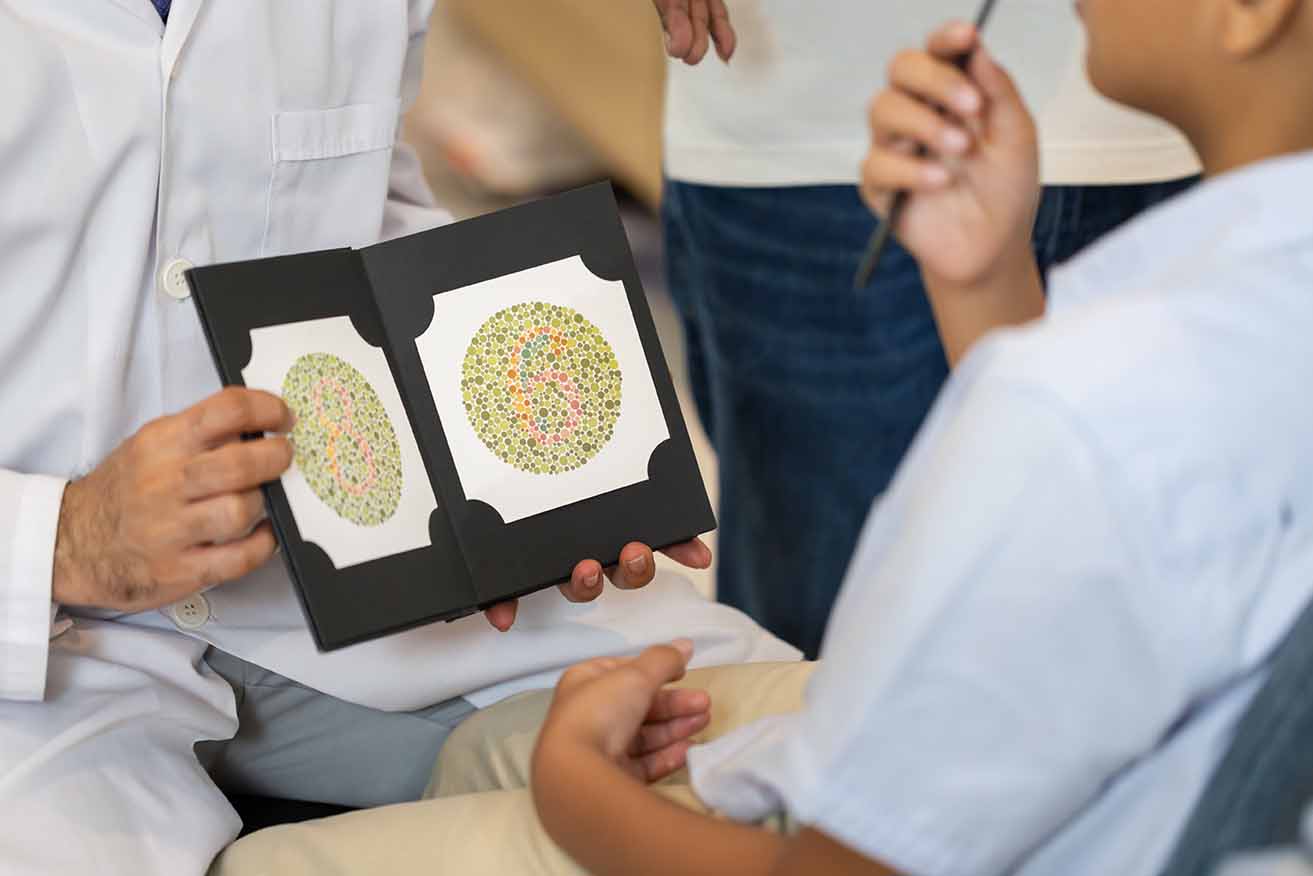
Identifying and Understanding Color Blindness
What do Mr. Rogers, Keanu Reeves, Prince William and Howie Mandel have in common? Aside from perhaps being men with a good sense of humor, they, and countless others, suffer from color vision deficiency — commonly referred to as color blindness.
One in 12 people assigned male at birth is likely to have some variation of color blindness.
The term color blindness may be a misnomer because it is pretty rare for someone’s vision to lack any color at all. Instead, it is the reduced ability to recognize or identify specific colors.
What Causes Color Deficiency or Color Blindness?
Well, first, what creates or brings us color? Essentially, wavelengths of light. Each wavelength is a different color, and when we see color, it is the reflection of those wavelengths back to our eyes.
Visible light waves are varying wavelengths, and the color depends on the length.
Our eyes have two types of photoreceptors for these wavelengths: rods and cones. Rods allow us to see objects in black, white and grey. The cones detect color. There are three types of cones, those that detect blue, green and red wavelengths of light.
When those cones are missing or dysfunctional, it affects how color is seen.
Types of Color Vision Deficiency or Color Blindness
Red-green color deficiency
Difficulty distinguishing between red and green is one of the most common forms of color vision deficiency. While several forms are mild, protanopia and deuteranopia make someone unable to distinguish between red and green.
Blue-yellow color deficiency
Deficiencies in this category are less common. Tritanomaly makes it challenging to see the difference between blue and green, and also between yellow and red. Tritanopia makes it difficult to tell the difference between blue and green, purple and red and yellow and pink.
We have to remember, colors are made of other colors. Take it back to your elementary school days and combining primary colors: Blue and yellow create green, blue and red create purple and so on. As such, a color deficiency in red can sometimes create issues seeing or discerning purple or pink.
Achromatopsia, which affects only one in 30,000 people worldwide, is a condition characterized by a partial or total absence of color vision. With achromatopsia, the world is seen in black, white and shades of grey.
What Leads to Color Blindness?
More often than not, color blindness is genetic, but color vision deficiency can occur due to disease or damage. Age-related macular degeneration, a leading cause of vision loss in adults, can also lead to color blindness, as can glaucoma and cataracts. Medical conditions like diabetes, Alzheimer’s disease and multiple sclerosis have also been linked to color blindness or color vision deficiency.
How To Know if You’re Color Blind
An optometrist or ophthalmologist can test for color vision deficiency during your routine eye exam. The Ishihara Test is frequently used to look for red-green color vision deficiency. It includes pictures of numbers made up of colored dots surrounded by dots of another color. A patient is asked to read the numbers among the colored dots. People with color vision deficiency may have trouble seeing the numbers.
Living with Color Blindness
There is currently no cure for color blindness. Some people may choose to wear glasses that help distinguish colors within certain combinations, but these are not commonly used. While some accommodations may assist with confusion when it comes to activities like cooking or styling clothing, people with color blindness live full lives. For more valuable eye health insights, visit healthyvisionassociation.com/articles.
Articles in this newsletter are supposed to be informative, enlightening and helpful to you. While all information contained herein is meant to be completely factual, it is always subject to change. Articles are not intended to provide medical advice, diagnosis or treatment. Consult your doctor regarding any concerns you have.
Benefits may not be available at all membership levels. For more information, or to upgrade your membership, please call 1.800.992.8044.
